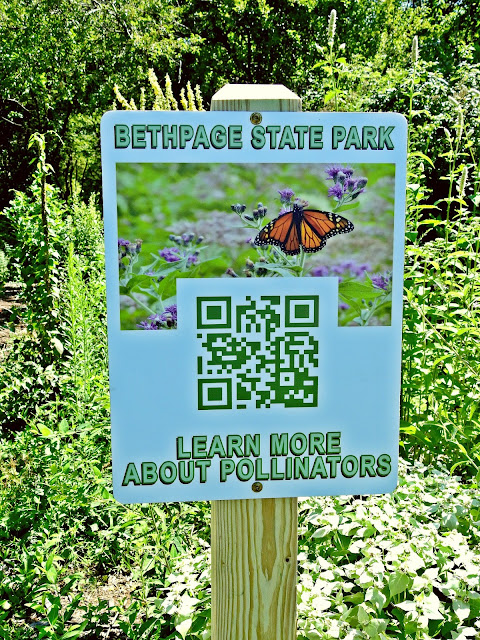How Bethpage State Park Aims to Better Understand Annual Bluegrass Weevil, a Common Turf Grass Pest
Over the years, the annual bluegrass
weevil (Listronotus maculicollis) has become quite the
nuisance for North American golf courses. At Bethpage State Park, our fair(way)
share of this pest starts when the weather gets warmer and the rhododendrons
begin to bloom.
As the species name suggests, annual bluegrass weevils (ABW) are beetles that feed predominately on annual bluegrass (Poa annua), especially when mowed short. This obviously makes golf course habitats extremely suceptible to ABW activity. In early spring, adult ABW migrate from forest edges and roughs, into fairway collars and greens. There they will lay eggs in the sheaths of P. annua. Early larvae will feed on these stems until they become too big and shift to feed on the crown of the turfgrass. It is at this stage that ABW is believed to cause the most damage. With an overwintering population and multiple generations per year, it is no wonder that these little insects succeed at creating a great deal of trouble for golf course managment.
As the species name suggests, annual bluegrass weevils (ABW) are beetles that feed predominately on annual bluegrass (Poa annua), especially when mowed short. This obviously makes golf course habitats extremely suceptible to ABW activity. In early spring, adult ABW migrate from forest edges and roughs, into fairway collars and greens. There they will lay eggs in the sheaths of P. annua. Early larvae will feed on these stems until they become too big and shift to feed on the crown of the turfgrass. It is at this stage that ABW is believed to cause the most damage. With an overwintering population and multiple generations per year, it is no wonder that these little insects succeed at creating a great deal of trouble for golf course managment.
 Our goals at this park are to be diligent about documenting ABW activity so that our pesticide sprays can be properly timed (more effective) and consequently, more sustainable (spray less). The techniques we have used to try and achieve this include:
Our goals at this park are to be diligent about documenting ABW activity so that our pesticide sprays can be properly timed (more effective) and consequently, more sustainable (spray less). The techniques we have used to try and achieve this include:
1. Using plants as phenological indicators - certain plant blooms coincide with ABW life cycle stages. Full bloom forsythia indicates movement of adults from overwintering sites, half green-half gold forysthia indicates adult peak population, and full bloom of Catawba rhododendron indicates peak larvae activity (left photo is a rhododendron we keep our eye on). This information, in combination with growing degree day data, helps our staff better understand the activity of this pest and the appropriate time to combat it.
2. Active scouting for adult ABW - these
small weevils are black, have a hardened exoskeleton and a
recognizable snout. One way we document their presence is by checking
grass clippings. Another is a soap flush (left photo, click on to zoom in), a technique that requires applying a
simple soultion of water and soap to a small patch of P. annua. This
irritates the adult weevils to come to the surface so that they can be counted.
We consider this an effective technique because it does not damage the grass,
nor does it effect non-target organisms.
3. Call on outside experts/researchers - Dr. Ben McGraw, a professor in turfgrass science from Penn State Univeristy, is one of our personal contacts for ABW questions and advice. This month, McGraw and his graduate student visited our courses to collect weevil samples from our most active sites. The target goal was to collect approximately 120 ABW specimens on at least 3 of the 5 courses at Bethpage State Park. This collection process required utilizing reconfigured leaf blowers that operated with reverse airflow. Inside the leaf blowers, nets were able to collect a sample of grass and ABW for a given area on the course.
These samples were laid out on trays for examination, where ABW numbers were counted and saved (for later inspection back at the lab). In total, the sampling process took approximately 5 hours, and was considered a team effort between the researchers and golf course staff (whose previous scouting aided the sampling/specimen collecting process).
 |
| Black Course - the course with the most weevil pressure. It was no surprise that Dr. McGraw was able to collect enough ABW on this course for his research. |
 |
| Green Course - less ABW pressure and therefore, collection took a little bit longer than our Black Course. |








Comments
Post a Comment